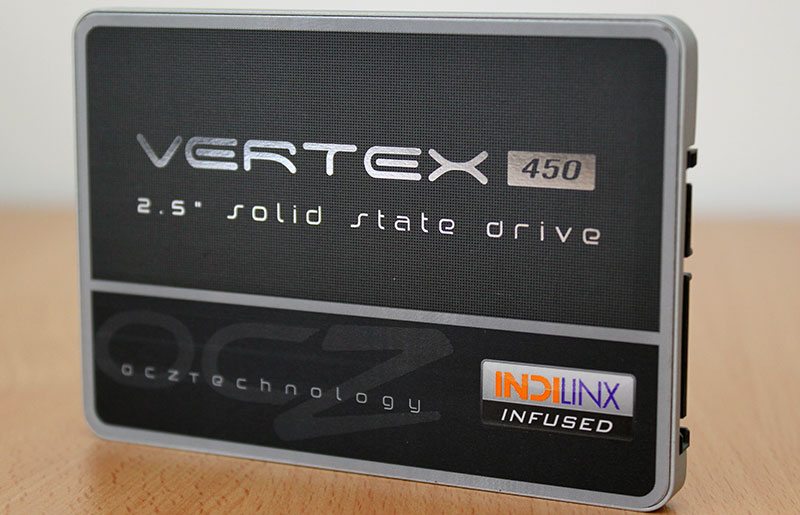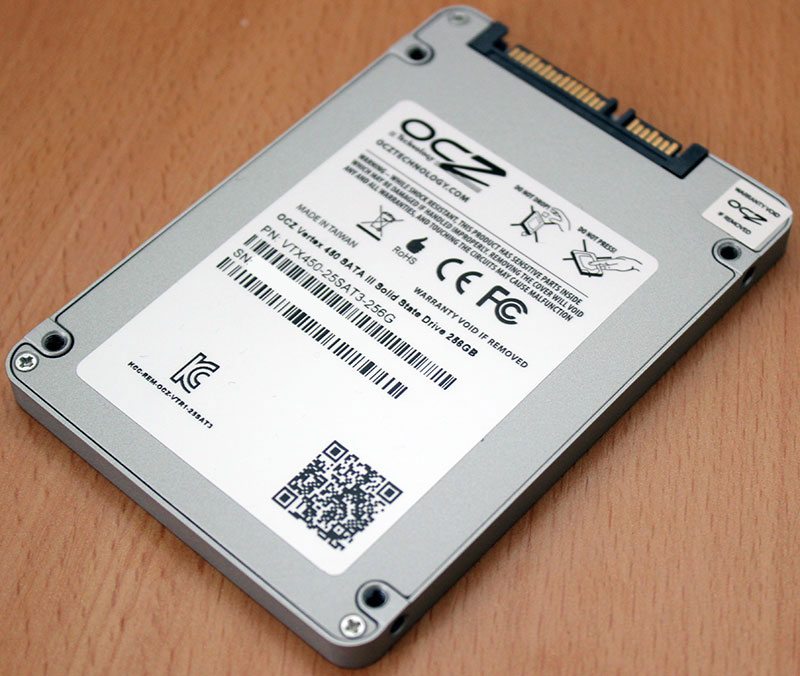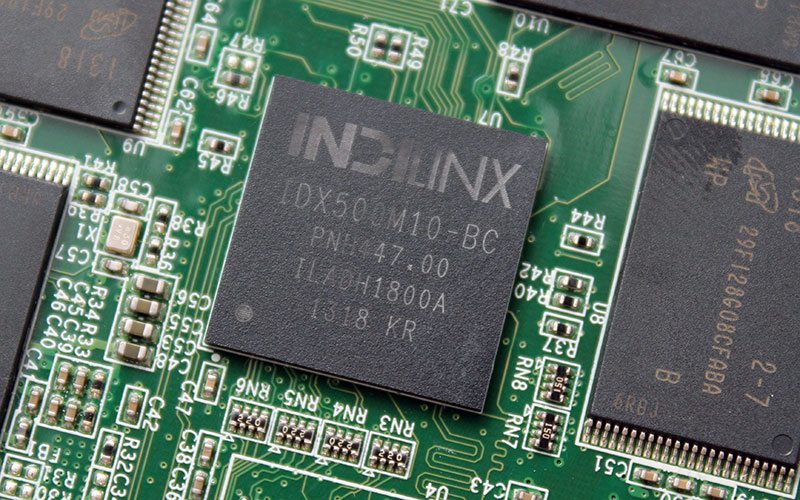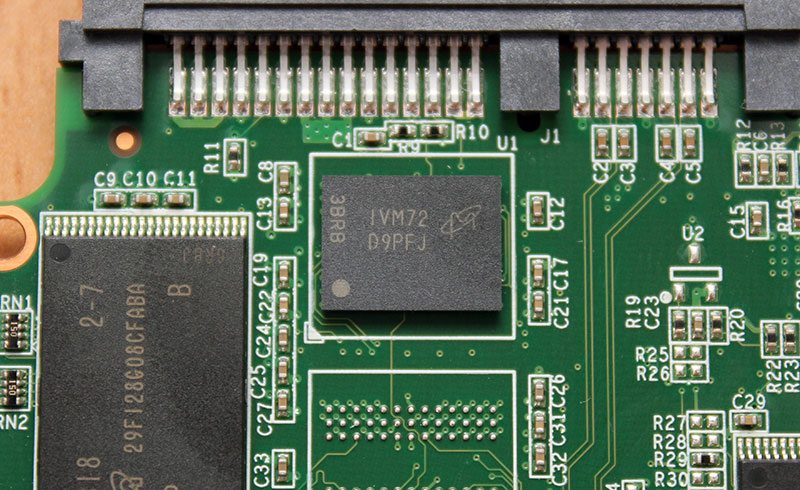OCZ Vertex 450 256GB SSD Review
Chris Hadley / 11 years ago
A Closer Look
The new Vertex drive has seen a slight design change over the rest of the Vertex drives with looks that closely resemble the Vector. Moving over to a non-black finish, the Vector appearance of the new drive to me make it look far more mature – hopefully this isn’t just looks and that internally the drives aged well and is keeping well up to date. We can also see that over the older Vertex drives, there has been a upgrade to one of Indilinx’ controllers – a first for the Vertex drives.

On the underside of the drive its business as usual with a warranty sticker covering one of the screws (not that it’s going to stop us having a look inside) and a larger sticker with serial numbers and warranty information.

Taking the drive apart (note this DOES VOID YOUR WARRANTY – you’ll be amazed how many people forget this) we can see how the lower part of the casing is used for heat dissipation from the controller due through a heat pad. The casing has a solid feel to it, which not only protects the drive, but it also gives a sense of quality.

Moving on to the heart of the Vertex 450, the PCB layout is very similar to that of the Vector drives, not just on this side, but also on the rear as well. This is mainly due to the use of the Indlinx controller and by doing so we can see reduced manufacturing costs which in turn gives a lower price point to the end user.

The controller of choice is the Barefoot 3 IDX550M10-BC – Following the acquisition of Indilinx by OCZ, these controllers are now home brewed and this means that they can be tailored just as OCZ want them to be – optimising the performance of the performance of the drive just how OCZ want it to be.

Instead of seeing some home-brewed NAND, the Vertex 450 uses a 20nm MLC NAND design from Micron – P/N 29F128G08CFABA. The drive has a total of sixteen NAND dies on its board – eight on each side of the PCB.

Alongside the MLC NAND, this design of controller also requires a cache for data transfer. Nestled up near the SATA connectors is one of two Micron IVM72 D9PFJ 256MB DRAM ICs giving the drive a total of 512MB of cache.

On the other side of the PCB we can see again how the PCB layout is near identical to that of the Vector, with eight Micron MLC NAND dies and the Micron DRAM IC up near the SATA connector.




















